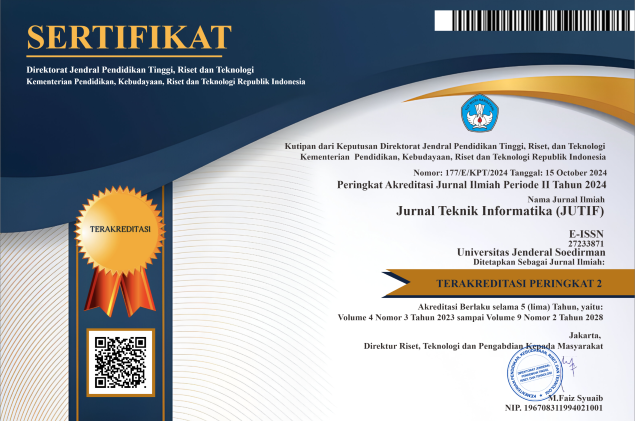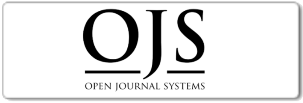IMPLEMENTATION OF CONVOLUTIONAL NEURAL NETWORK USING MOBILENETV2 TO DISTINGUISH HUMAN AND ARTIFICIAL INTELLIGENCE PAINTING
DOI:
https://doi.org/10.52436/1.jutif.2025.6.1.3827Keywords:
Art Painting, Convolutional Neural Network, CRISP-DM, MobileNetV2, TensorFlowAbstract
The advancement of artificial intelligence technology has had a significant impact on various fields, including painting. Artificial intelligence is now able to create works of art that resemble paintings produced by humans with a high level of detail and complexity. However, this progress has also created new problems in the world of painting, namely the difficulty in distinguishing between works produced by humans and those created by artificial intelligence. This problem has an impact on the originality of the artwork and has implications for aspects of ethics and creativity. This study aims to develop a deep learning model that can classify human and artificial intelligence paintings, and overcome the challenges in distinguishing between the two. The methodology used is the Cross Industry Standard Process for Data Mining (CRISP-DM), with a dataset consisting of 1,000 painting images. The architecture used is MobileNetV2, implemented using TensorFlow to build a Convolutional Neural Network (CNN). Techniques such as data preparation, data labeling, data splitting, resizing, and data augmentation are applied to improve model performance. Six test scenarios were carried out with variations in the learning rate, number of epochs, and freeze or unfreeze configurations on the base model. The results showed that the best model with a learning rate of 0.0001, base model unfreeze, and 5 epochs managed to achieve an accuracy of 97%, without any indication of overfitting or underfitting. This model was then implemented on an Android application in TFLite format, which can predict image classes with a confidence level of 89.98%.
Downloads
References
S. Salam, B. Sukarman, Hasnawati, and M. Muh, Pengetahuan Dasar Seni Rupa. 2020. [Online]. Available: http://eprints.unm.ac.id/18130/1/Pengetahuan Dasar Seni Rupa 2020 lengkap.pdf
N. I. Rahmahafida and W. B. Sinag, “Analisis Problematika Lukisan Ciptaan Artificial Intelligence Menurut Undang-Undang Hak Cipta,” J. Pendidik. dan Konseling, vol. 4, no. 6, pp. 9688–9696, 2022.
A. Xue, “End-to-end Chinese landscape painting creation using generative adversarial networks,” Proc. - 2021 IEEE Winter Conf. Appl. Comput. Vision, WACV 2021, pp. 3862–3870, 2021, doi: 10.1109/WACV48630.2021.00391.
M. Ragot, N. Martin, and S. Cojean, “AI-generated vs. human artworks. a perception bias towards artificial intelligence?,” Conf. Hum. Factors Comput. Syst. - Proc., 2020, doi: 10.1145/3334480.3382892.
Y. Tian, “Artificial Intelligence Image Recognition Method Based on Convolutional Neural Network Algorithm,” IEEE Access, vol. 8, pp. 125731–125744, 2020, doi: 10.1109/ACCESS.2020.3006097.
T. A. Bowo, H. Syaputra, and M. Akbar, “Penerapan Algoritma Convolutional Neural Network Untuk Klasifikasi Motif Citra Batik Solo,” J. Softw. Eng. Ampera, vol. 1, no. 2, pp. 82–96, 2020, doi: 10.51519/journalsea.v1i2.47.
Q. N. Azizah, “Klasifikasi Penyakit Daun Jagung Menggunakan Metode Convolutional Neural Network AlexNet,” sudo J. Tek. Inform., vol. 2, no. 1, pp. 28–33, 2023, doi: 10.56211/sudo.v2i1.227.
R. Holiyanti, S. Wati, I. Fahmi, and C. Rozikin, “Pendeteksi Sampah Metal untuk Daur Ulang Menggunakan Metode Convolutional Neural Network,” J. Tek. Inform. dan Sist. Inf., vol. 8, no. 1, pp. 261–274, 2022, doi: 10.28932/jutisi.v8i1.4492.
M. K. Soegeng, L. Liliana, and A. Noertjahyana, “Penerapan Convolutional Neural Network untuk Klasifikasi Kanker Kulit Melanoma pada Dataset Gambar Kulit,” J. Infra, vol. 9, no. 1, pp. 47–51, 2021, [Online]. Available: https://publication.petra.ac.id/index.php/teknik-informatika/article/view/10945
F. N. Cahya, N. Hardi, D. Riana, and S. Hadiyanti, “Klasifikasi Penyakit Mata Menggunakan Convolutional Neural Network (CNN),” Sistemasi, vol. 10, no. 3, p. 618, 2021, doi: 10.32520/stmsi.v10i3.1248.
Y. Yohannes, D. Udjulawa, and F. Febbiola, “Klasifikasi Lukisan Karya Van Gogh Menggunakan Convolutional Neural Network-Support Vector Machine,” J. Tek. Inform. dan Sist. Inf., vol. 7, no. 1, pp. 192–205, 2021, doi: 10.28932/jutisi.v7i1.3399.
R. S. T. Menezes, A. M. Cordeiro, R. Magalhães, and H. Maia, “Classification of Paintings Authorship Using Convolutional Neural Network,” no. October, pp. 1–8, 2021, doi: 10.21528/cbic2021-116.
K. Mondal, “Categorization of artwork images based on painters using CNN,” J. Phys. Conf. Ser., vol. 1818, no. 1, 2021, doi: 10.1088/1742-6596/1818/1/012223.
K. Dong, C. Zhou, Y. Ruan, and Y. Li, “MobileNetV2 Model for Image Classification,” Proc. - 2020 2nd Int. Conf. Inf. Technol. Comput. Appl. ITCA 2020, pp. 476–480, 2020, doi: 10.1109/ITCA52113.2020.00106.
R. Indraswari, R. Rokhana, and W. Herulambang, “Melanoma image classification based on MobileNetV2 network,” Procedia Comput. Sci., vol. 197, pp. 198–207, 2021, doi: 10.1016/j.procs.2021.12.132.
Statcounter GlobalStats, “Mobile Operating System Market Share Indonesia,” 2023. https://gs.statcounter.com/os-market-share/mobile/indonesia
C. E. D. Vanegas, J. C. G. Mejía, F. A. V. Agudelo, and D. E. S. Duran, “A Representation Based on Essence for the CRISP-DM Methodology,” Comput. y Sist., vol. 27, no. 3, pp. 675–689, 2023, doi: 10.13053/CyS-27-3-3446.
J. A. Solano, D. J. Lancheros Cuesta, S. F. Umaña Ibáñez, and J. R. Coronado-Hernández, “Predictive models assessment based on CRISP-DM methodology for students performance in Colombia - Saber 11 Test,” Procedia Comput. Sci., vol. 198, no. 2020, pp. 512–517, 2021, doi: 10.1016/j.procs.2021.12.278.
W. Y. Ayele, “Adapting CRISP-DM for idea mining a data mining process for generating ideas using a textual dataset,” Int. J. Adv. Comput. Sci. Appl., vol. 11, no. 6, pp. 20–32, 2020, doi: 10.14569/IJACSA.2020.0110603.
A. B. J. Malyan, R. R. Putra, E. Laila, A. T. Wardhana, M. Fikri, and I. G. T. Isa, Epoch Tuning Hyperparameter in Fire Image Classification at University Sjakhyakirti, no. July. Atlantis Press International BV, 2023. doi: 10.2991/978-94-6463-118-0_37.
S. Khasim, H. Ghosh, I. S. Rahat, K. Shaik, and M. Yesubabu, “Deciphering Microorganisms through Intelligent Image Recognition: Machine Learning and Deep Learning Approaches, Challenges, and Advancements,” EAI Endorsed Trans. Internet Things, vol. 10, pp. 1–8, 2024, doi: 10.4108/eetiot.4484.
Z. Geng, Y. Xu, B. N. Wang, X. Yu, D. Y. Zhu, and G. Zhang, “Target Recognition in SAR Images by Deep Learning with Training Data Augmentation,” Sensors, vol. 23, no. 2, 2023, doi: 10.3390/s23020941.


























